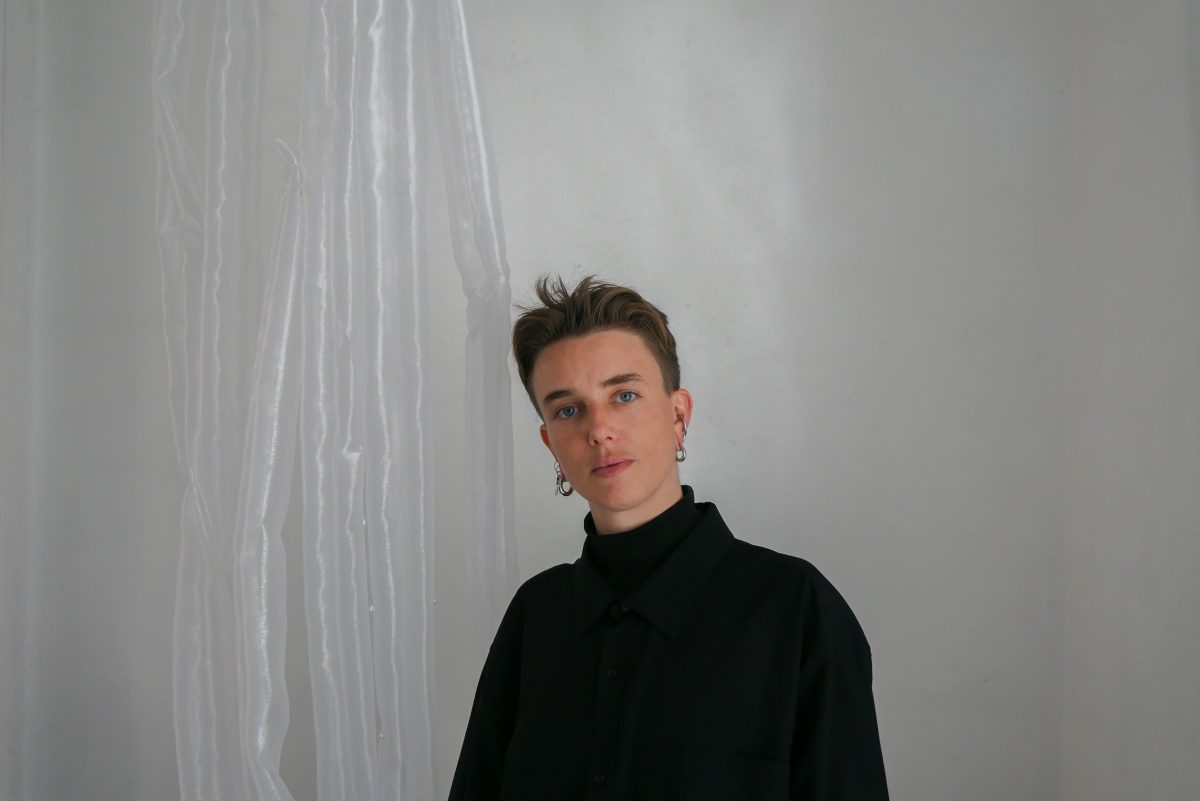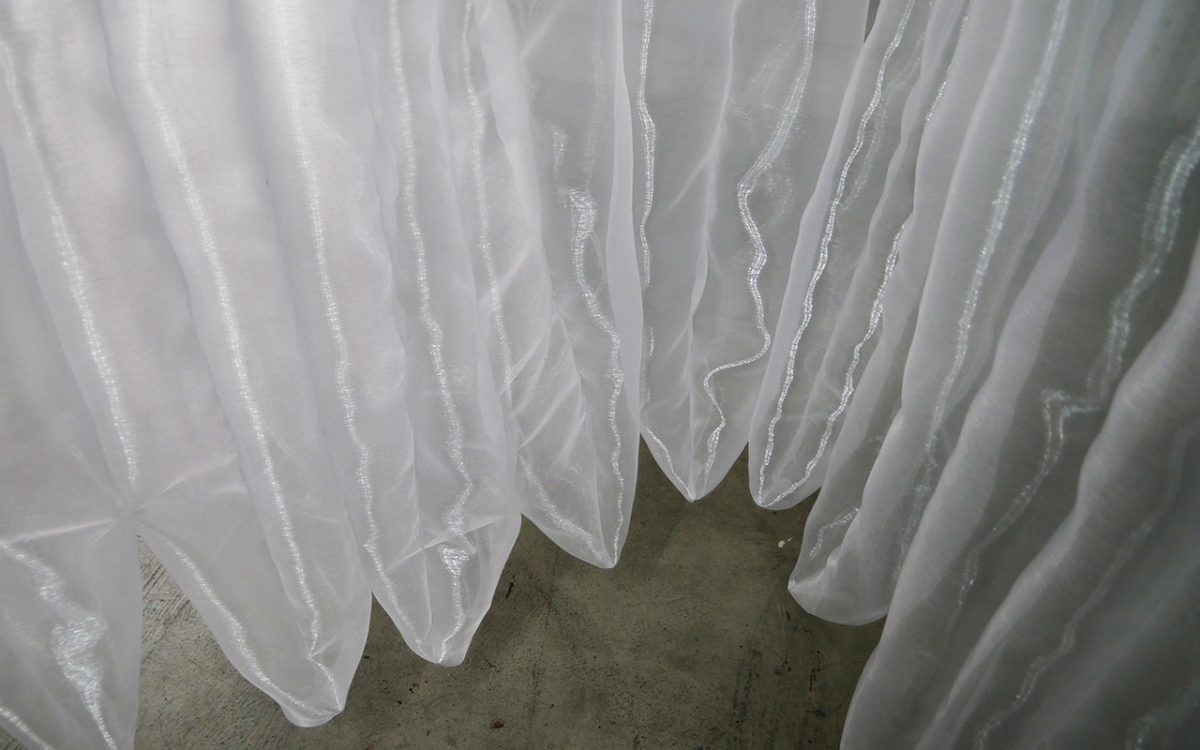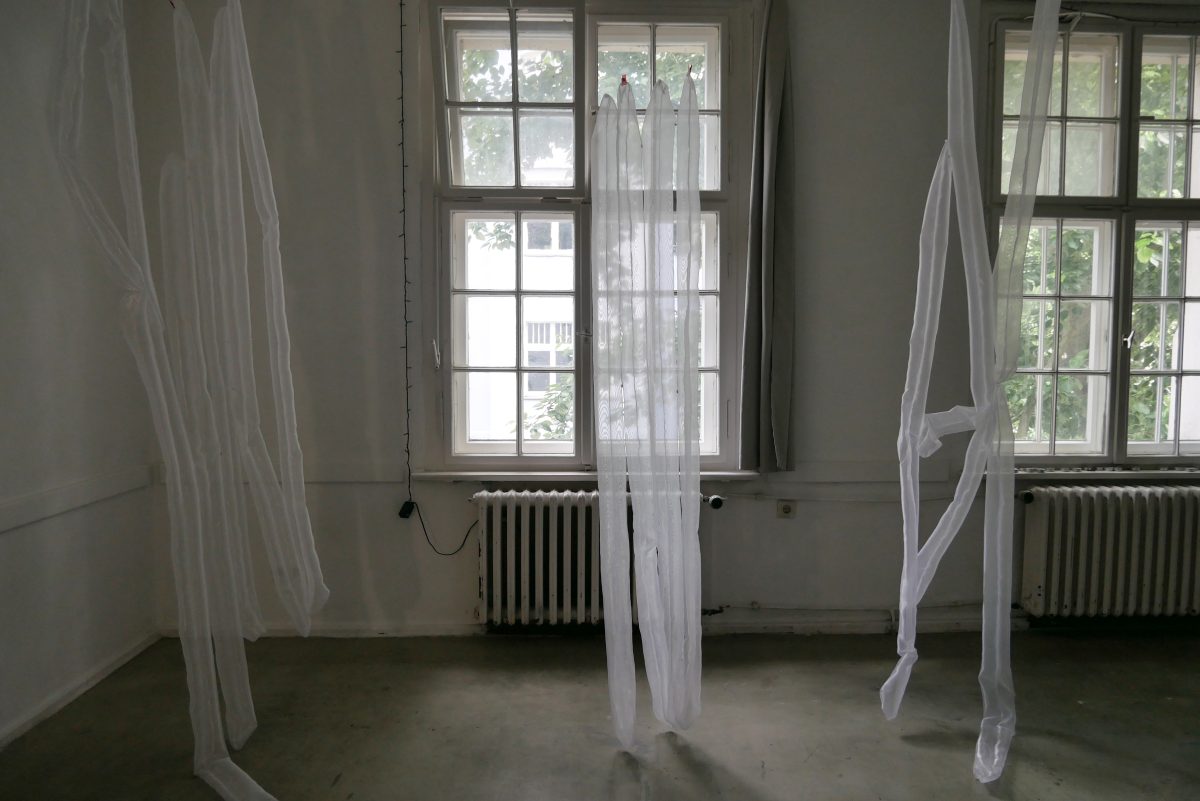Meet the Artist // Kate Bohunnis
Kate Bohunnis is a visionary artist exploring gender, identity, and pleasure through inventive material manipulation. Their work consists of crafting large-scale installations. With a focus on the object, they navigate the complexities of power and containment, inviting viewers into a provocative dialogue on identity and expression.
Can you tell us about your background? How did you start your artistic journey?
I’m an artist from Australia. I work mostly in sculptural installation. My mediums are metal and marble and silicon latex textiles and print. I’ve been working in sculptural installation for the last eight years. Before that I was studying printmaking and then I did an honours year during which I moved into sculpture.
I didn’t really know that I wanted to be an artist growing up but I was always making and I was living in a really creative house with my mum. She’s also always drawing and painting and making sculptures from hard rubbish, so there was always this priority to express yourself in any way possible. Then for some reason when I was in high school I thought that I should do something else. I tried other degrees that “make more sense financially” and I hated it. I really hated it and I was super unhappy and so I just decided to do what makes me happy.
So, my artistic career started from this influence from my mum and feeling really happy when I had this freedom to express myself. When I’d stopped that by choosing something else that wasn’t aligned with who I am, I felt bad and this prompted an understanding that I need to do something that is feeding myself. Then that hasn’t stopped and I can’t go back.

What is your process now? How do you come up with a concept for your artworks?
Typically I’m really interested in identity and human psychology and narrative construction. I like using materials that have some sort of material performativity and therefore can have relationships with psychological states or experiences.
Typically my starting point always comes from a feeling, something that I’m either excited about or worried about or something that is surrounding me in some way. Often my concept also comes from my own personal experience and then it builds from there. Then I think intuitively. I start to gather materials that make sense for me to be using, whether or not they make sense for other people.
Do you pick materials in any particular way? How do you make your choices?
It’s really intuitive and it’s about touch or feeling. I’m really interested in materials that can be made to do something unexpected. For example, I work with metal a lot and I have learned how to do things the right way from doing it as a job, but I also prioritize trying to do things the wrong way to see what happens and how I can respond to it as it’s developing. I think it’s the same thing with all materials. I try and then consider how they can be changed in some way and acquire a different identity.


Do you think that art has some capability to produce change and convey important messages?
Yeah, I think so definitely. Art is a really powerful language and of course it can be interpreted in so many different ways, but even that is important. I think that there’s a real ability for art to speak to people and create change and develop movements or even just different ways of seeing. I think it’s really important and I believe that, even if it starts in an artistic sense, this lesson about understanding how to perceive something differently can be used in the rest of your life as well.
What do you think about the art world? What is your relationship with the art market? Is it something you have in your mind when creating?
I have goals to succeed, but honestly I try not to think about it. I really try not to think about the art market and if I’m fitting into something. If I’m considering what’s happening around me or comparing my work, then it takes away this direct relationship I have with the process. Of course I understand that I’m in it, but I try to enjoy it not in a competitive sense or in a success-driven way.
Why did you join a residency? Have you done residencies before? Why did you come to Berlin?
Yes, I’ve done a few residencies before, a few in Australia and a few international ones as well. Then I came to GlogauAIR. I really wanted to come to Berlin and I’d heard about GlogauAIR from a friend who had a really good experience and I was really interested. I’m from a smaller city in Australia, so it was really exciting to come and work in a space that has a larger artistic community and a lot more diversity. The studios that I’m working in in Australia are full of equipment and there are big metal workshops. And so it was really exciting for me to scale that back and have to think differently without relying on how I’m normally making work.
Is living with other artists having an influence on your work? And what about the city? Has it become a source of inspiration in some ways?
I think you are always being influenced, but it’s too soon to understand how broad the impact is. Sharing space, having any conversations, seeing other artists work or how they deal with materials or concepts or just even socializing generally, there’s always something that you’re inspired by or you’re gathering, but in terms of seeing some direct line right now I think it’s too soon for me to say.
As for Berlin, again it’s difficult for me to say. You’re taking in information all the time and you don’t even realize how it’s filtering out of you until later, but certainly even just being around different architecture, seeing different work and all of it has an effect on one’s mind.
You are staying in Berlin. So, what are your plans after the residency?
I don’t have any concrete plans, but I will stay here as long as I can and as long as it’s working for me. I want to get a studio and have some shows. I have a gallery in Australia as well so it’s really exciting to keep developing my work in Australia and exhibit there, but then also start to do that here throughout Europe.












